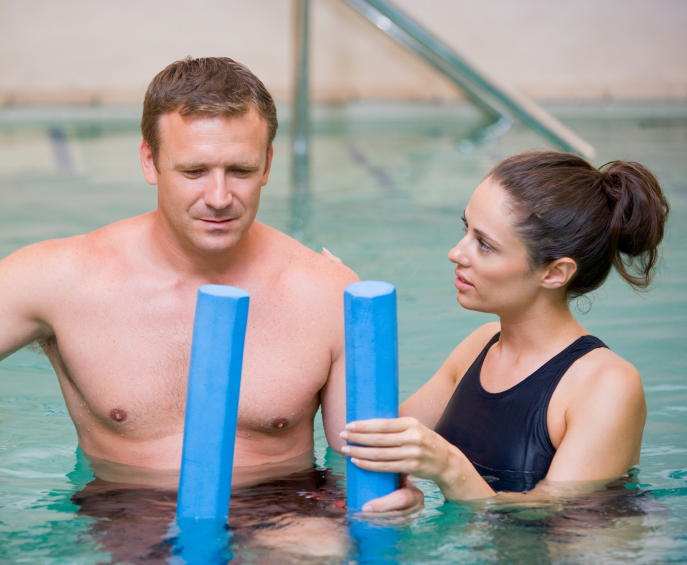For close to 20 years now, I’ve been telling anyone who would listen that how well a soft tissue injury is managed in the first days and weeks can have an enormous impact on the overall severity of the injury, and the amount of time the injured party will have to spend out of action on the sidelines.
The basic premise behind this position is that the initial damage done to your tissues (be it muscle, ligament, or any other) is only the start of the story. Following any trauma, the body’s immune system will launch into action, and its first line of attack is the inflammatory response. In an attempt to eliminate any initial cause of cell injury, to clear out necrotic (dead) cells, and to initiate the repair process, the immune system undertakes a series of complex biological processes – the combination of all of these processes is called the inflammatory response.
The primary physical effect of the inflammatory response is for blood circulation to increase to the injured area and its surrounding tissues. In particular, blood vessels supplying the area dilate, and gaps appear in the walls of the blood vessels to allow larger immune cells to pass to and from the injury site. As a result of these changes, many different types of cells that constitute the immune system congregate at the site of inflammation, along with a large supply of proteins, which fuel the immune response.
When suffering from an injury with a significant inflammatory response, we experience it as four characteristic signs (that were defined in the first century by the Roman scholar Celsus for those who feel the need to get their nerd on…): Calor (HEAT), Dolor (PAIN), Rubor (REDNESS), and Tumor (SWELLING).
For the purposes of this article, this is about as in depth as we need to go. The takeaway from this is that the body often overdoes the inflammatory response, and particularly in gravity dependent injuries (such as ankle sprains), the magnitude of swelling and heat produced can actually cause more cells to die than were initially destroyed in the initial injury. It does this by limiting the amount of oxygen that can be transported to these cells, whilst at the same time increasing their need for oxygen.
You heard right: Your immune system, in its quest to help you repair and remodel following trauma, will often lead to increased cell death as a result of its response!
For this reason, our early management of any injury needs to be undertaken as quickly as possible, and needs to focus on minimising this “secondary cell death” – which in large part occurs if we work to minimise (optimise is probably a better word here) our body’s inflammatory response.
For many years, the RICE acronym (Rest, Ice, Compression, and Elevation) was used in First Aid courses across the world, and was easy to remember and apply. As a physiotherapist who has been alive long enough to have seen patients prescribed bed rest for non-specific low back pain in a country hospital (note to everyone – this is NOT what you should do!), and has seen mounting evidence over the years across all areas of health that early mobilisation and movement are extremely important in accelerating and optimising recovery, I for one am extremely pleased to see that the POLICE are taking over.
The POLICE acronym (Protection, Optimal Loading, Ice, Compression, and Elevation) is much more appropriate given our current understanding of how injuries respond to various factors, and helps we physios in that we no longer will have to explain that R (rest) actually should be viewed as relative rest (ie… moving/using the injured area as much as possible ensuring you are not doing further damage).
With that background understanding, the acronym will make much more sense, so let’s get into the 5 steps to get you back up and going as quickly as possible after any injury!

PROTECT
The “P” in our acronym reinforces our need to ensure that we shield the injury from being made worse, which we could do by doing too much too soon. With any injury, too much stress will lead to further cell death, increased inflammation, and a longer recovery time. However, protection rarely means doing nothing. Instead, it may mean utilising a brace, some strapping, or crutches for a time.
OPTIMAL LOADING

Protecting the injury is intrinsically linked to the next two letters in our acronym. Too much protection (or rest) can actually be extremely deleterious to a good recovery. Muscle weakness, joint and muscle stiffness, reduced body position sense (proprioception), and the potential for adverse central nervous system sensitization are all very real consequences of doing too little in the early stages of recovery.
We are increasingly finding across most aspects of health (not just musculoskeletal injury, but after most surgery or neurological trauma as well) that progressive loading, early mobilisation, and early weight bearing will facilitate better outcomes than long periods of rest or immobilisation. It is this loading that provides the stimulus to guide your immune system to remodel healing tissues to be able to eventually withstand the stresses we would like them to be able to.
In order to find that fine line between doing further damage and optimising recovery, we have a number of tools at our disposal. At Empower Physiotherapy, we utilise hydrotherapy and Clinical Pilates in many cases, to enable physiological movement under decreased load. The use of crutches, bracing, and active assisted exercise are also strategies we can implement to ensure the recovery from trauma is as swift and effective as possible.

The general rule we like to tell our patients is to move as normally as possible, as often as possible, provided you are not significantly increasing your pain during or after the activity, or significantly increasing the swelling around the injury site. In most cases, early mobility exercises can be commenced immediately.
ICE

Icing an injury is probably the best known strategy for treating a new soft tissue injury. Interestingly, it is also probably the least well understood, and one that has the least solid evidence.
We do know that ice in the early stages of an injury (24-72 hours post trauma) is an effective analgesic, and for that reason alone it should probably be used.
The general perception in the public is that icing an injury will directly diminish swelling or circulation to the injured area, but the evidence that this is true is quite poor.
Rather, current thought is that by diminishing the temperature at an injury site, we decrease the metabolism of cells, thereby reducing their demand for oxygen. In a swollen area where oxygen transport is impaired, this can lead to cells being able to survive in an environment where they otherwise would not do so.
The precise protocols for application of ice are also quite varied. Whilst we generally advise application of ice for 20-30 minutes at a time, repeating every 2 waking hours, I would put it out there that after my recent Achilles tendon repair, I kept ice on the surgery site almost constantly to keep the temperature down (apart from when I was doing early mobilisation and weight bearing work of course…Optimal Loading people!).

COMPRESSION
Compression remains the most crucial strategy in controlling the swelling that would otherwise adversely impact your injury’s recovery. By increasing the extravascular pressure (the pressure outside your blood vessels) through the application of a compressive garment or strapping, you directly diminish the transport of fluid and cells form within the blood vessels into the extravascular space.
Our advice is to generally keep compression applied for as long as there is any sign of swelling, or if the injury site is irritable and exhibits a swelling response with any activity.
If you need appropriate compression tools, Empower Physiotherapy is only a phone call or email away.
ELEVATION

Elevation (not the U2 song…) refers to placing an injured body part above the level of the heart. The rationale here is that if we do this, gravity act as our friends in reducing excessive blood flow to the injured area, whilst assisting venous drainage, thereby reducing or minimising swelling.
Any doubts I once held regarding the effectiveness of elevation on the degree of swelling (and pain!) have well and truly been blown out of the water following the initial 4 weeks following Achilles tendon repair. The joy of getting that operated foot above my heart after having it dependent would come close to equalling the joy of being at the Eagles ’06 Grand Final win (close, but not quite).
Elevation is particularly important in the early stages of lower limb injuries, and ankle sprains in particular. Given that we’re hopefully applying ice fairly regularly in the first 2 or 3 days post injury, this is a great time to elevate.
Summary
So there you have it – 5 steps to get you back into life as quickly and as effectively as possible!
More than anything, the primary thing we would like people to understand is:
The first few days following an injury are CRITICAL in minimising your recovery time, and OPTIMSING your outcome.

Given this fact, we continue to be amazed/confused/astounded at the number of clients who only present to us after the initial acute injury management phase – sometime advised by their GP to delay their presentation, and sometimes because they think that they should not present for “treatment” until their pain settles down.
Given the importance of these early days – please call us or see us for advice as soon as possible after any injury – it could take days or weeks off your recovery time!Until then, keep moving (and try to prevent those injuries!)
Jase









